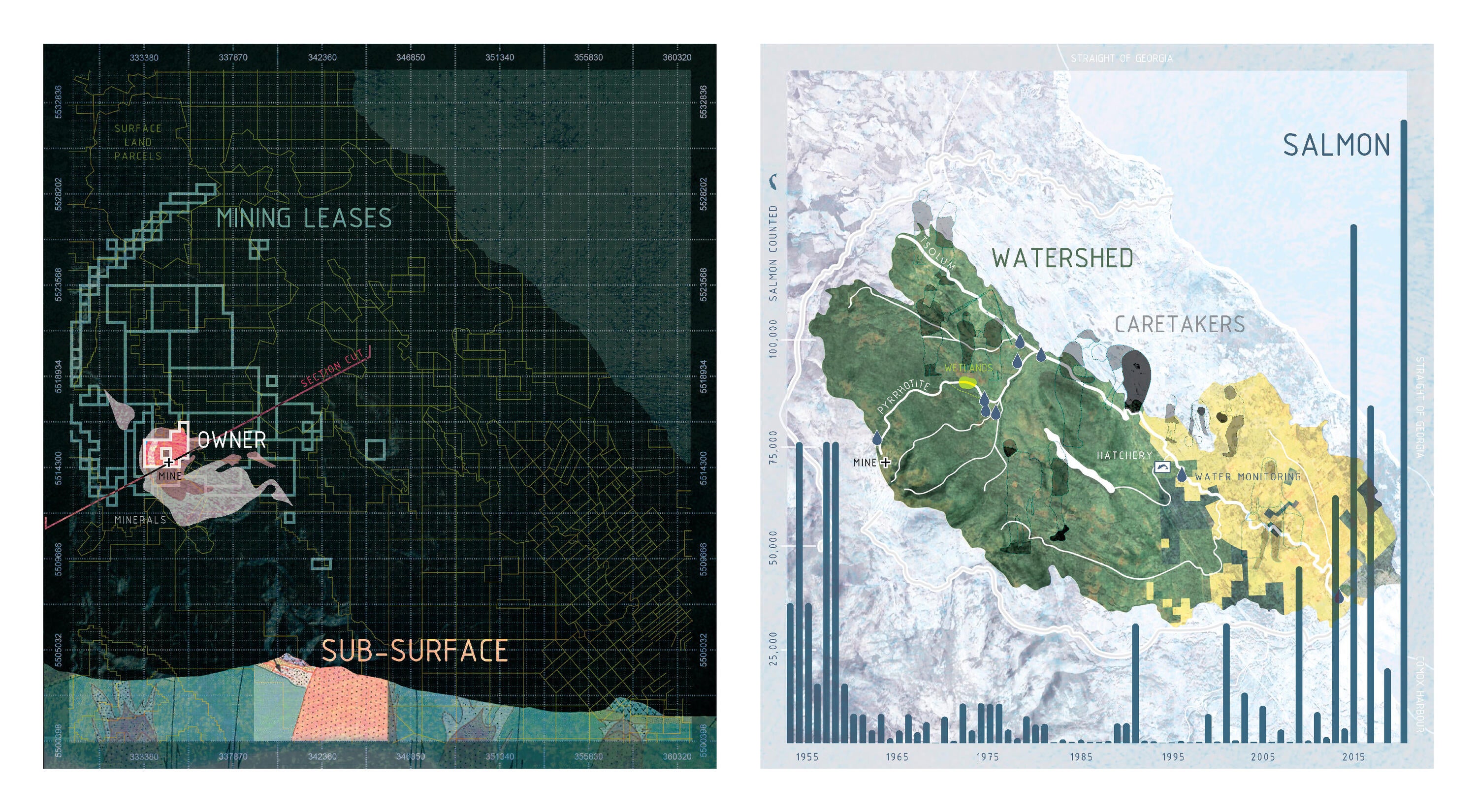What Happens After The Mine?: A critique of approaches to the design, remediation, and perpetual care of post-extraction landscapes in Canada

Abstract:
Mining produces enormous amounts of waste, often toxic, that requires containment, record keeping, and monitoring in perpetuity to ensure it does not harm the surrounding ecosystem. Post-extraction landscapes in Canada receive inadequate remediation and care. Current mine closure regulations and remediation practices focus on short term, technical toxin mitigation strategies on site and ignore the diverse impacts of mining on surrounding communities and non-human species. The push for a global transition to renewable energy paradoxically requires an unprecedented increase in mining for minerals used in wind turbines, solar panels, and batteries. The Government of Canada is taking the opportunity to capitalize on this global demand for its natural resources by exploring, developing, and opening new mines. In doing so, it is consequently creating new permanent waste sites each year, adding to thousands of existing abandoned mines not yet remediated.
Leaning on post-extractivist literature, this thesis analyzes a range of approaches to reclamation and remediation of post-mining landscapes through three themes: (1) perpetuity – acknowledging the deep time extraction processes rely upon and the endurance of toxins, critiquing the short-term thinking of the mining industry, and advocating for long-term planning of care practices; (2) communities – recognizing that negative impacts of extraction on humans and nature are interconnected, reflecting on the colonial history of mining, and arguing that remediation must include social healing; (3) ecosystems – exploring the limits of property and profit driven practices, and recognizing the importance of multi-species, watershed scale remediation and care.
Part 1 examines government regulations and the mining industry’s mine closure and reclamation practices. Part 2 considers the role of architects and landscape architects in the design of post-extraction sites, by reviewing projects and identifying stakeholder motivations and values. Part 3 discusses post-extractivist frameworks which advocate for a more holistic remediation and explores theory on concept of perpetual care, through the themes of perpetuity, communities, and ecosystems. Part 4 studies two community initiatives, which demonstrate aspects of perpetual care. These case studies gather and synthesize a range of existing documents, including technical assessment and remediation reports, community member testimonies, and socio-ecological data. Writing and drawings contrast the mining industry’s perspective and values with community perpetual care. Finally, the thesis reflects on the mining industry, government, designer, and community’s approaches to post-extraction sites, and considers the potential role of designers in mine reclamation. It argues that the themes of perpetuity, communities, and ecosystems are overlooked and need to be addressed for successful design, remediation, and perpetual care of post-extraction landscapes.
The examining committee is as follows:
Supervisor:
Jane
Mah
Hutton
Committee
member: Rick
Andrighetti
Internal-external
reader:
Val
Rynnimeri
External: Christopher
Alton
The
defence
examination
will
take
place:
Tuesday,
April
12th,
2022,
10:00am
Teams
link
available
via
the graduate
student
Learn
page
or
by request.
The
committee
has
been
approved
as
authorized
by
the
Graduate
Studies
Committee.
A
copy
of
the
thesis
is
available
for
perusal
in
ARC
2106A.